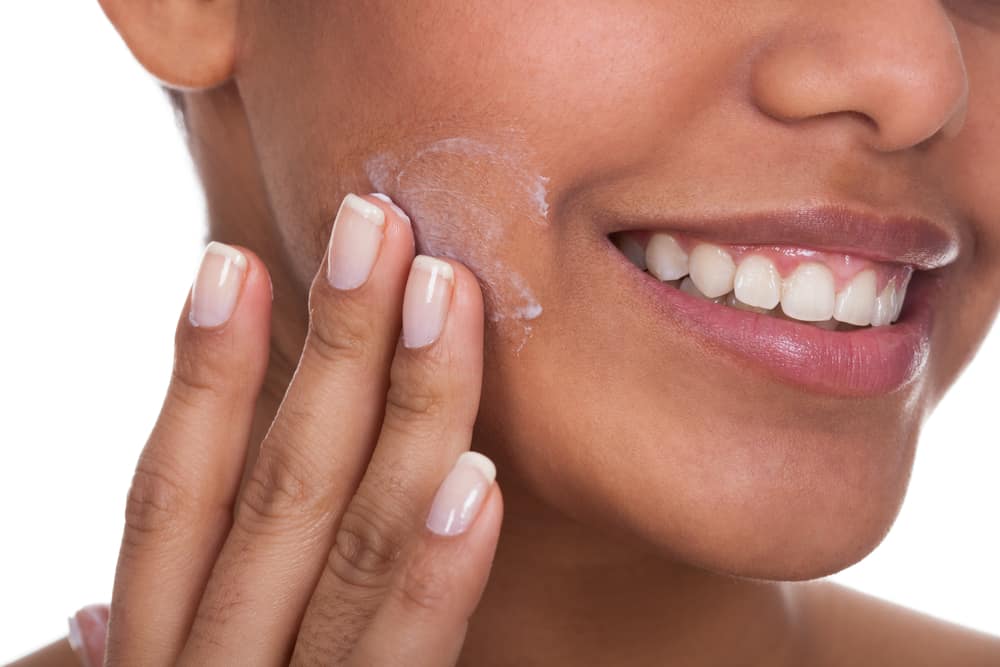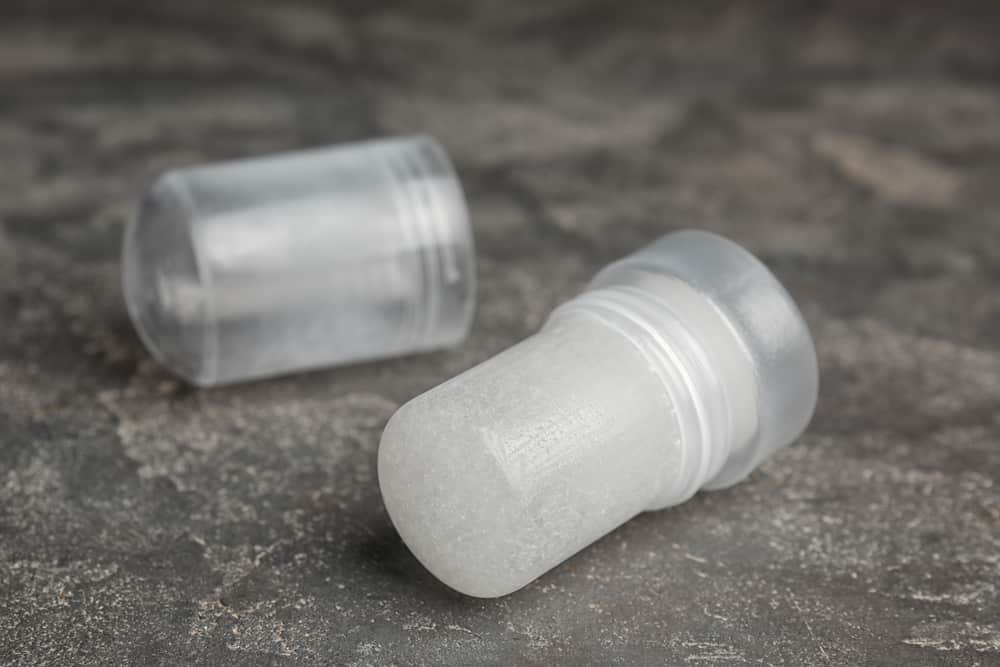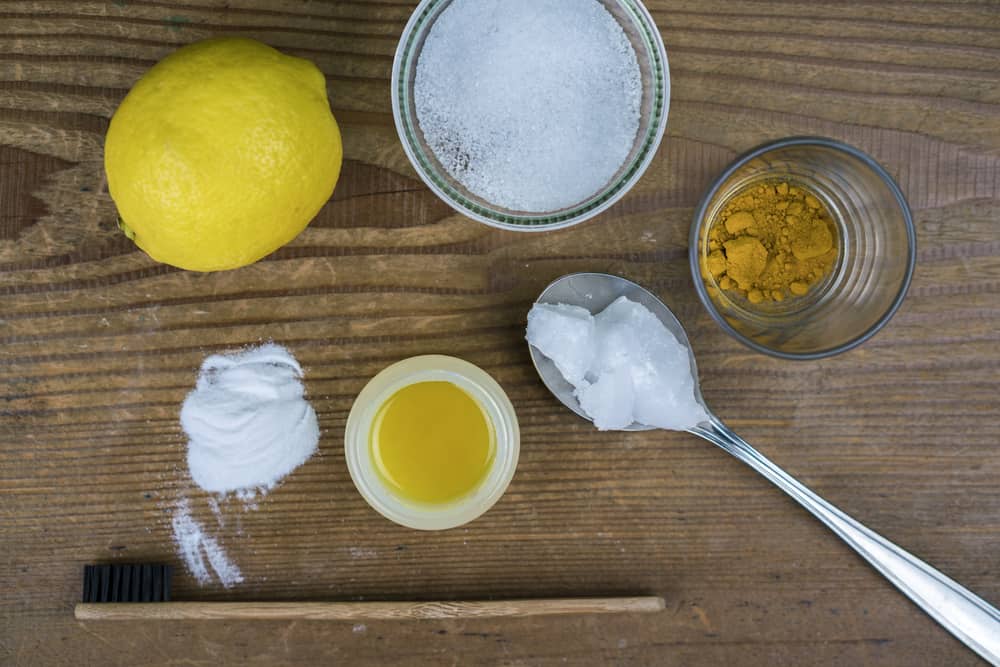Here are the simplest natural products we could find for personal hygiene, including shampoo, hair conditioner, face and body soap, skin moisturizer, deodorant and toothpaste. There are lots of natural products you can buy and home recipes you can try to create a complete cleansing routine. But we found that just a few common ingredients — baking soda, vinegar, and oil — and simple mixing techniques will easily and economically provide all the personal cleansing products you need with effective results.

Shampoo and Hair Conditioner
Here are some easy recipes for hair shampoo and conditioner:
Baking soda solution: Mix 1 tablespoon baking soda with 1 cup (8 ounces) hot water and stir or shake until dissolved. Transfer to a squirt bottle. Wet hair, squirt with some of the baking soda mixture, work through hair, and rinse with warm water or conditioning rinse (recipe below).
If you have hard water, you may need to mix in more than 1 tablespoon baking soda—your hair should feel slippery when the solution is applied to your hair. Borax is sometimes suggested as an alternative, however it is harmful to your eyes, so we prefer not to use borax for shampooing—although it makes a effective, inexpensive household cleaner and disinfectant.
Vinegar or lemon juice conditioning rinse: Mix 1 tablespoon apple cider vinegar or lemon juice with 1 cup (8 ounces) water. Don’t worry, vinegar does not leave a lingering scent after your hair is dry.
If you want additional conditioning effect, steep the water with herbs before adding the vinegar. To steep, bring 1 cup water to a boil and pour over 2 tablespoons dried herbs, steep for 10 minutes, strain, and cool. Now add the vinegar or lemon juice.
For dried herbs, use chamomile (for blonde hair), rosemary (for dark hair), or dried nettle leaves (for dandruff control). Another herb for dandruff control is parsley, but use 1/4 cup chopped fresh parsley instead of 2 tablespoons dried.
As with the baking soda shampoo, store water mixture in a squirt bottle. After shampooing, squirt with some of the conditioner, work through hair, and rinse with warm water.
You may find that using baking soda and vinegar (or lemon) rinse produces slightly greasy hair—this is known as a “detox” period where your scalp is adjusting to no longer being stripped of its natural oils by using commercial shampoos. For most people, this period lasts no more than 2-3 weeks.
Finally, many people recommend using shampoo infrequently, perhaps once a week. On other days, simply rinse your hair with plain water. Just a thorough rinse is often all you need.
Bar Soap and Liquid Soap
Bar soaps are usually more economical and environmentally friendly than body washes and liquid soap, because they contain less water, often come in biodegradable wrapping rather than plastic bottles, and contain fewer potentially hazardous chemicals. (Especially avoid anti-bacterial soaps and washes that contain triclosan.)
If you want to make your own bar soap, be sure that you work carefully with caustic lye. Find reliable recipes and safety techniques online at Mother Earth News and Treehugger.
If you don’t want to try making your own, you could try castile soap. Economical castile soap simply uses olive oil as a base, rather than other fats such as coconut oil or lard. Castile soaps come in both liquid and bar form, and can be used for washing skin as well as for household tasks. Pour full strength liquid castile soap on a washcloth or loofah to use in the shower or bath, or dilute 2 parts liquid castile soap with 1 part water and put into a pump to use as a body or hand wash.
Reasonably priced and eco-friendly brands of these soaps include Seventh Generation, Dr. Bronner, and Burt’s Bees. Most of these companies state the soap can be diluted for use, so a small bottle can go a long way.

Skin Moisturizer
The simplest moisturizer is simply refined or filtered organic oil. Some oils work better than others for specific skin types, so buy small amounts when trying them for the first time. While almost any oil will work, the most commonly recommended oils are apricot kernel, castor, coconut, hemp seed, jojoba, olive and sesame. Look for economy size bottles of food-grade oils that are sold in stores, instead of buying small, niche-focused containers in beauty supply stores or in the body lotion aisle.
Apricot kernel and jojoba oil are recommended for dry skin, and almond or castor oil for normal to oily skin. Coconut, olive, and sesame oil can be irritating or clog pores in some people. If you find one type of oil heavy and viscous (such as castor or olive), use it very sparingly or combine it with a lighter oil (such as almond, coconut, or jojoba).
To use oil as a moisturizer after washing face or hands, follow your cleansing routine with your choice of oil: place a drop on your fingertip and pat around the eyes, lips, cuticles, or anywhere a little extra moisture is desired. After a bath or shower, while your skin is still warm and damp, spritz oil lightly from a spray bottle on your arms, legs, and body, and then rub it in evenly.
Natural Deodorant
Baking soda tops the list again, as it does with so many other hygiene and cleaning tasks. Simply pat baking soda directly onto dry, clean skin. If you want additional anti-perspirant control, mix the baking soda with an equal part of cornstarch.

Adding essential oil adds can provide odor control and pleasing fragrance. Add just 2-3 drops essential oil per cup of dry powder (either plain baking soda or a 50/50 corn starch blend) and whisk or sieve well to distribute oil evenly throughout the mixture. Good oils to use include anti-bacterial tea tree oil, soothing lavender, or fragrant rose.
Another option is to use a a crystal stick deodorant that is made of mineral salts. It is fragrance free and lasts a long time.
Whitening Toothpaste
You guessed it — baking soda is a primary ingredient in many commercial tooth-whitening products. Baking soda is gritty enough to remove plaque, but not abrasive enough to remove tooth enamel.
For a tooth-whitening formula, combine one teaspoon each of baking soda, fine-grained table or pickling salt, and dried sage leaves or peppermint leaves.
 Combine baking soda with hydrogen peroxide to help remove particles caught between teeth and kill bacteria. For each brushing, use just 1/2 teaspoon baking soda and 1/4 teaspoon hydrogen peroxide. Many users simply mix it in the palm of their hand, and then scoop it up with their toothbrush.
Combine baking soda with hydrogen peroxide to help remove particles caught between teeth and kill bacteria. For each brushing, use just 1/2 teaspoon baking soda and 1/4 teaspoon hydrogen peroxide. Many users simply mix it in the palm of their hand, and then scoop it up with their toothbrush.
If you liked this article, you might also like:

The no-shampoo routine of baking soda followed by a vinegar & water rinse works great. I don’t bother to dilute the baking soda–I just massage a small handful into my scalp. I also add two drops of lemon essential oil to the vinegar rinse to mask the vinegar smell. I’ve been following this routine for four months now. My hair dresser recently asked me what I use because my rather thin hair seems noticeably thicker. And my husband thinks my hair looks better than it ever has.